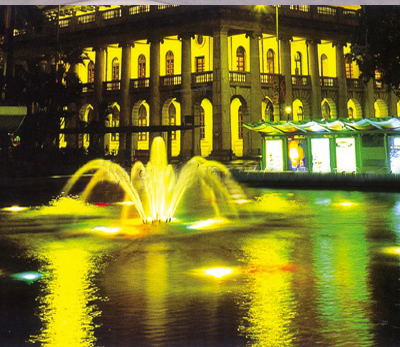LED underwater lights are based on LED lighting technology. Compared with traditional underwater lamps, LED underwater lights can save more energy, have longer service life, more environmental friendly, have more color modes and more powerful in decoration. These lamps have been widely used in all kinds of underwater landscape lighting systems. Different from other LED lights lamps, since LED underwater lights have to be used underwater, there are some installation notes need to be taken noticed.

1) LED underwater lamps should work under DC (constant-current power suppliers). Under the control of constant-currently power suppliers, the forward potential of LED wall washer lights, LED flood lights, LED underwater lights, LED buried lights will be declined with growth of working temperatures. In fact, this situation exerts very tiny impact on underwater lamps. However, using constant-voltage drivers will lead to an opposite condition: the chip temperature will increase with the rise of current, even destroy the lamps in some series cases. Therefore, LED underwater lamps should use constant-current power suppliers. Besides, the working voltage (input voltage) should reach the rated voltage given by user manuals. Too high will cause damages while too low cannot get the wanted lighting effect.
2) Anti-static measures are necessary. Anti-static measures need to be taken in the process of LED underwater lights’ installation, such like operation table should be connected with ground; workers should wear anti-static suits during the operation (anti-static rings, anti-static gloves); install anti-static ion fans in the operation room (if necessary); and meanwhile maintain the air humidity of installation around 65% to avoid the static electricity caused by the dry air. Besides, different LED components have different anti-static capability. Good-quality LEDs are more powerful in the anti-static aspect.
3) Notice the tightness of LED products. No matter what LED lamps are used, outdoor lights should have a certain level of water-proof and dust-proof functions. Same for LED underwater lights. There is no doubt that these lamps need the best water-proof capability (with an IP level of 67 at least). According to the IP standards, the water-proof capacity of lamps can be divided into 8 levels: level 6—splashing level; level 7—watertight level; level 8—inflating watertight level. A poor sealing will directly impact the performances of these lights. A underwater lamp used in deep water must meet the requirements of level 8 of water-proof standards.
